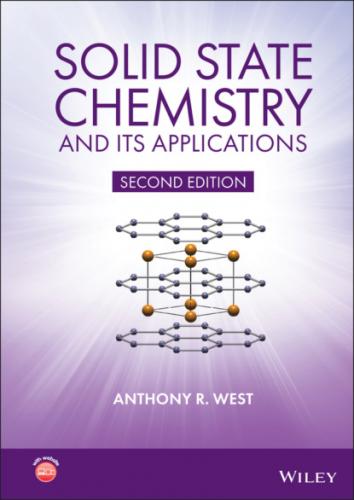The consequences that aperiodicity within ordered structures has for the electronic structure and optoselectronic properties of quasicrystals are still being evaluated. Periodicity has provided an important starting point in the development of theoretical concepts such as Brillouin zones and the band theory of solids. It has also underpinned theories of dislocations and explanations about the mechanical properties of crystalline materials, especially metals and alloys. However, it is probably fair to say that, at present, although quasicrystals are much more than a scientific curiosity, they do not, as yet, fit into the general panorama of mainstream solid state sciences, perhaps because of the challenges and difficulties associated with evaluating and presenting aperiodic crystallography in terms of higher dimensional space.
1.2.3 Mirror symmetry
A mirror plane, m, exists when two halves of, for instance, a molecule can be interconverted by carrying out the imaginary process of reflection across the mirror plane. The silicate tetrahedron possesses six mirror planes, one of which, running vertically and perpendicular to the plane of the paper, is shown in Fig. 1.7(a). The silicon and two oxygens, 1 and 2, lie on the mirror plane and are unaffected by reflection. The other two oxygens, 3 and 4, are interchanged on reflection. A second mirror plane lies in the plane of the paper; for this, Si and oxygens 3, 4 lie on the mirror but oxygen 2, in front of the mirror, is the image of oxygen 1, behind the mirror.
The photograph in Fig. 1.7(d) shows the British comedian Harry Worth creating a mirror image of half of his body by posing at the end of a high street shop window. Half of the picture is of his body and half is its mirror image. It therefore exhibits perfect mirror symmetry which is never achieved by human bodies in reality!
1.2.4 Centre of symmetry and inversion axes
A centre of symmetry,
The inversion axis,
Figure 1.7 Symmetry elements: (a) mirror plane; (b) centre of symmetry; (c) fourfold inversion axis. (d) The British comedian Harry Worth creating a mirror image of half of his body by reflection in a shop window.
1.2.5 Point symmetry and space symmetry
The symmetry elements discussed so far are elements of point symmetry. For each, at least one point stays unchanged during the symmetry operation, i.e. an atom lying on a centre of symmetry, rotation axis or mirror plane does not move during the respective symmetry operations. Finite‐sized molecules can only possess point symmetry elements, whereas crystals may have extra symmetries that include translation steps as part of the symmetry operation. These are elements of space symmetry, of which there are two types.
The screw axis combines translation and rotation; the atoms or ions in a crystal which possesses screw axes appear to lie on spirals about these axes. A schematic example is shown in Fig. 1.8(a). All you need to demonstrate a screw axis is a handful of coins which can be arranged on a flat surface with either their heads (H) or tails (T) facing upwards. The symbol for a screw axis, XY, indicates translation by the fraction Y/X of the unit cell edge in the direction of the screw axis together with simultaneous rotation by 360/X° about the screw axis. Thus, a 42 axis parallel to a involves translation by a/2 and rotation by 90°; this process takes place twice along a for every unit cell.
Figure 1.8 Arrangement of coins with heads (H) and tails (T) illustrating (a) a 21 screw axis parallel to a and (b) an a glide plane perpendicular to b; in each case, translation between symmetry‐related objects is by a/2.
The glide plane combines translation and reflection, as shown schematically in Fig. 1.8(b). Translation may be parallel to any of the unit cell axes (a, b, c), to a face diagonal (n) or to a body diagonal (d). The a, b, c and n glide planes all have a translation step of half the unit cell in that direction; by definition, the d glide has a translation step which is ¼ of the body diagonal. For the axial glide planes a, b and c, it is important to know both the direction of the translation and the reflection plane, e.g. an a glide may be perpendicular to b (i.e. reflection across the ac plane), Fig 1.8(b), or perpendicular to c.
Most crystal structures contain examples of space symmetry elements which are often difficult to visualise unless one has 3D models available. An example of both a screw axis and a glide plane in the same structure is shown in Fig 1.21 and discussed in Section 1.12. It is always amusing to look for symmetries in everyday objects. Next time you are in a car park, look at the arrangement of parking lots, especially if they are arranged diagonally, and see if they are displaced relative to each other in the form of a glide plane!
One difference between crystals and quasicrystals concerns space symmetry. Crystals, as a bare minimum, exhibit a periodic translation from one unit cell to the next. In many cases, translational symmetry elements, i.e. screw axes and glide planes, are also present. By contrast, quasicrystals do not exhibit space symmetry: they do not have a regular repeat unit, nor can translational symmetry elements be identified.
1.3 Symmetry and Choice of Unit Cell
The geometric shapes of the various crystal
